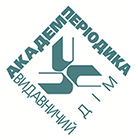FINANCIAL SUPPORT INNOVATION IN SMEs IN EUROPEAN UNION REGIONS’ SMART SPECIALIZATION
Section "Economics": Socio-economic Problems of Regional Development
Abstract
The intentions of the Ukrainian authorities to increase the competitiveness of regional economies based on smart specialization caused the study of the characteristics of financing projects of smart specialization of regions of the European Union. The introduction of innovations in the activities of small and medium enterprises (SMEs) to increase their competitiveness is one of the key areas of financial support for smart specialization. The aim of the study is to identify the effectiveness of financial support for smart specialization projects in the EU regions in terms of funding research, development and innovation aimed at improving the competitiveness of small and medium-sized businesses. In the course of the study, we analyzed the databases of the European Structural and Investment Funds on the amount of funding for research, development and innovation aimed at increasing the competitiveness of small and medium-sized busi nesses, by areas of funding and EU countries. We also compared the level of use of funds and the level of achievement of the goals planned in the projects. EU countries and regions used the funds planned by the European Structural and Investment Funds to finance the implementation of innovations in SMEs only by a third due to weak interaction of SMEs with research centers, as well as due to insufficient projects to improve the efficiency of SMEs through implementation results of research, development and innovation. The main emphasis in supporting small and medium-sized businesses through the implementation of research advances has been placed in the smart specialization strategies of the Netherlands, Slovakia, Poland, the United Kingdom and Germany. However, the largest amount of funding for research, development and innovation in SMEs in 2014-2020 among EU member states was planned, in addition to Poland and Germany, for Italy and Spain. The analysis showed that by 2020 the level of implementation of only certain goals of smart specialization reached 50 % or more of the planned indicators. However, in the context of the EU countries, there was no homogeneity in achieving all the goals related to the development and functioning of small and medium-sized businesses through the implementation of research, development and innovation. The efficiency of using the financial resources of the European Structural and Investment Funds for the implementation of smart specialization strategies in the EU regions was not high. It is likely that by 2023 when the projects launched in 2014-2020 will be completed, the level of achievement by the EU regions of smart specialization goals in terms of implementing research, development and innovation in SMEs will increase. Nevertheless, in our opinion, it will not be possible to achieve their full implementation.
Keywords
smart specialization, innovations, small and medium enterprises, European structural and investment funds, region
Downloads
References
2. Aleksandra Gulc. Analysis of Methodological Approach to Identify Smart Specialization on the Example of Polish Regions. Procedia — Social and Behavioral Sciences. 2015. № 213. P. 817-823. https://doi.org/10.1016/j.sbspro.2015.11.483
3. Steliana Sandu. Smart Specialization Concept and the Status of Its Implementation in Romania. Procedia Economics and Finance. 2012. Vol. 3. P. 236-242. https://doi.org/10.1016/S2212-5671(12)00146-3
4. Ricard Esparza Masana, Tatiana Fernández. Monitoring S3: Key dimensions and implications. Evaluation and Program Planning. 2019. Vol. 77. https://doi.org/10.1016/j.evalprogplan.2019.101720
5. Kalle A. Piirainen, Anne Nygaard Tanner, Lars Alkærsig. Regional foresight and dynamics of smart specialization: A typology of regional diversification patterns. Technological Forecasting and Social Change. 2017. Vol. 115. P. 289-300. https://doi.org/10.1016/j.techfore.2016.06.027
6. Ishchuk S.О., Sozanskyy L.Y. Methodological principles for choosing potential areas of smart specialization of the regions of Ukraine. Economics and Law. 2020. No. 2. P. 32-44. https://doi.org/10.15407/econlaw.2020.02.032 [Іщук С.О., Созанський Л.Й. Методологічні засади вибору потенційних сфер смартспеціалізації регіонів України. Економіка та право. 2020. № 2. С. 32—44].
7. Polishchuk Yevheniia, Ivashchenko Alla, Britchenko Igor, Machashchik Pavel and Shkarlet Serhiy. European smart specialization for Ukrainian regional development: path from creation to implementation. Problems and Perspectives in Management, 2019. № 17 (2). P. 376-391. https://doi.org/10.21511/ppm.17(2).2019.29
8. Industrial transition. No regions left behind. The official website of the European Commission. URL: https://ec.europa.eu/regional_policy/en/information/publications/brochures/2019/industrial-transition-no-regions-left-behind (last accessed: 17.09.2020).
9. European structural and investment funds 2014-2020: official texts and commentaries. The official website of the European Commission. URL: https://ec.europa.eu/regional_policy/sources/docgener/guides/blue_book/blueguide_en.pdf (last accessed: 25.11.2020).
10. European structural and investment funds. EU Overview. The official website of the European Commission. URL: https://cohesiondata.ec.europa.eu/overview (last accessed: 10.03.2021).
11. Stocktaking study on financial instruments by sector. Final report. Fi-compass. URL: https://www.fi-compass.eu/news/2020/06/fi-compass-stocktaking-study-financial-instruments-sector-published (last accessed: 02.03.2021).
12. ESIF 2014-2020 categorisation ERDF-ESF-CF planned vs implemented. The official website of the European Commission. URL: https://cohesiondata.ec.europa.eu/2014-2020/ESIF-2014-2020-categorisation-ERDF-ESFCF-planned-/3kkx-ekfq (last accessed: 30.09.2020).
13. Doussineau, M., Arregui-Pabollet, E., Harrap, N., Merida, F. Drawing funding and financing scenarios for effective implementation of Smart specialisation strategies, JRC Technical report. 2018. s3platform. URL: https://s3platform.jrc.ec.europa.eu/funding-scenarios (last accessed: 25.09.2019).
14. ESI Funds Open Data Platform. Frequently Asked Questions. The official website of the European Commission. URL: https://ec.europa.eu/regional_policy/en/faq/about_open_data/#25 (last accessed: 27.01.2021).
15. ESIF 2014-2020 Achievement Details. The official website of the European Commission. URL: https://cohesiondata.ec.europa.eu/2014-2020/ESIF-2014-2020-Achievement-Details/aesb-873i (last accessed: 30.06.2020).
Abstract views: 293 PDF Downloads: 161









